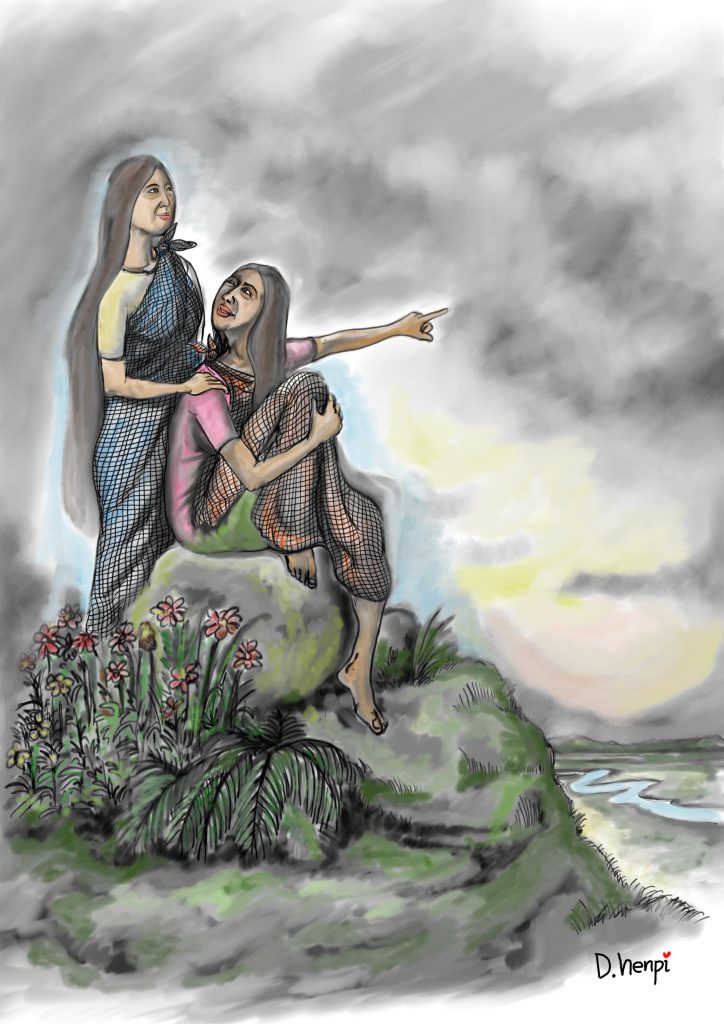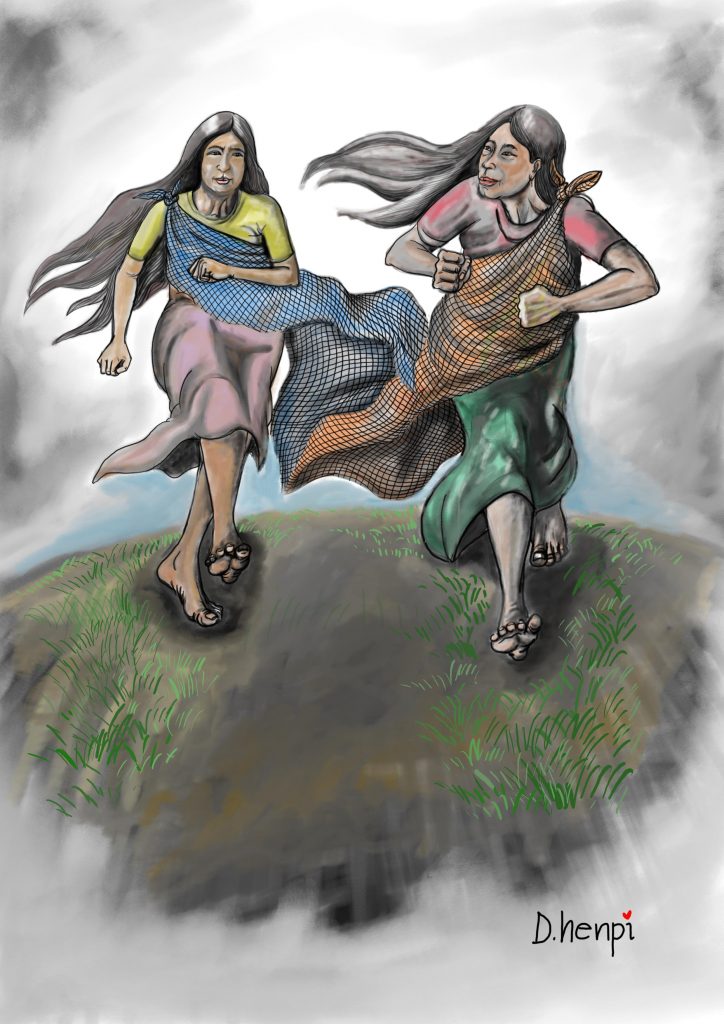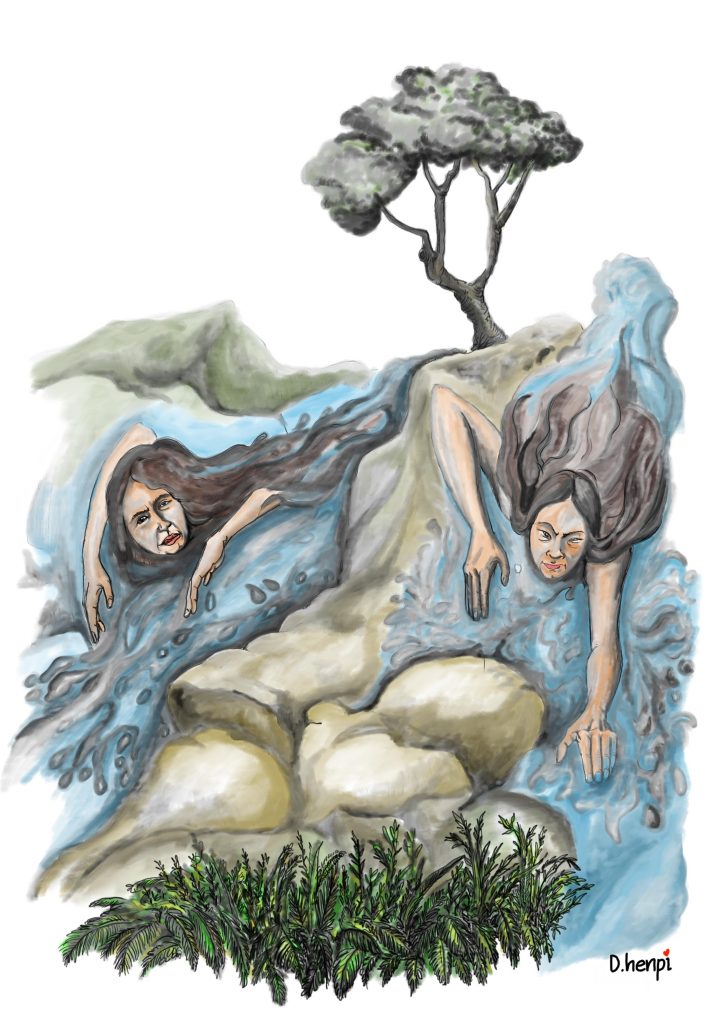Illustrations: Henpilien
| Ka Iam and Ka Ngot, the twin daughters of the god of Shillong, were two very beautiful beings; they were lively and frolicsome, and were indulged and given much freedom by the family. Like all twins they were never happy if long separated. One day the two climbed to the top of the Shillong mountain to survey the country. In the distance they saw the woody plains of Sylhet, and they playfully challenged one another to run a race to see who would reach the plains first. Ka Ngot was more retiring and timid than her sister, and was half afraid to begin the race; Ka Iam, on the other hand, was venturesome and fearless, and had been called Ka Iam because of her noisy and turbulent disposition. Before the race she spoke very confidently of her own victory, and teased her sister on account of her timidity. |  |
 | After a little preparation for the journey the twins transformed themselves into two rivers and started to run their race. Ka Ngot, searching for smooth and easy places, meandered slowly, taking long circuits, and came in time to Sylhet; but not finding her sister there, she [53]went forward to Chhatak, and on slowly towards Dewara. Seeing no sign yet of her sister, she became very anxious and turned back to seek her; and, in turning, she took a long curve which looked in the brilliant sunshine like a curved silver chain, and the Khasis living on the hill-tops, when they saw it, exclaimed with wonder: “Rupatylli, Rupatylli!” (A silver necklace, a silver necklace!) and to this day that part of the river is known as “Rupatylli.” |

Ka Iam, full of vigour and ambition, did not linger to look for easy passages, but with a noisy rush she plunged straight in the direction of Shella, the shortest cut she could find. She soon found, however, that the road she had chosen was far more difficult to travel than she had anticipated. Large rocks impeded her path at many points, and she was obliged to spend much time in boring her way through; but she pitted her young strength against all obstacles, and in time she reached Shella and came in view of the plains, where, to her chagrin, she saw that her sister had reached the goal before her, and was coming back leisurely to meet her. It was a great humiliation, for she had boasted of her victory before the race began, but, hoping to conceal her defeat from the world, she divided herself into five streams, and in that way entered the plains, and joined her sister. The rivers are called after the two goddesses to this day, and are known as “Ka Um Ngot” and “Ka Um Iam” (the river Ngot and the river Iam).

Ever since Ka Ngot won the great race she has been recognised as the greater of the two twins, and more reverence has been paid to her as a goddess. Even in the present day there are many Khasis and Syntengs who will not venture to cross the “Um Ngot” without first sacrificing to the goddess; and when, on their journeys, they happen to catch a glimpse of its waters, they salute and give a greeting of “Khublei” to the goddess Ka Ngot who won the great race.
Dougel Henpilen is an established cartoonist of Shillong who hails from Imphal, Manipur. He dud his schooling from Delhi and later passed from Jamia Milia Islamic university of Lucknow. His cartoons were featured in the very first issue of Kajingshai -the Light—under Larger Than Life Section ![]()
